Understanding the Role of ABA Therapy in Academic Development
Applied Behavior Analysis (ABA) therapy has emerged as a cornerstone in supporting children with autism spectrum disorder (ASD) within educational settings. By leveraging scientific principles of learning and behavior, ABA promotes academic success, social skills, and independence. This article explores how ABA therapy directly influences academic achievement, its core techniques, and its integration into classroom environments to foster meaningful educational outcomes.
Core Principles of ABA and Their Educational Impact
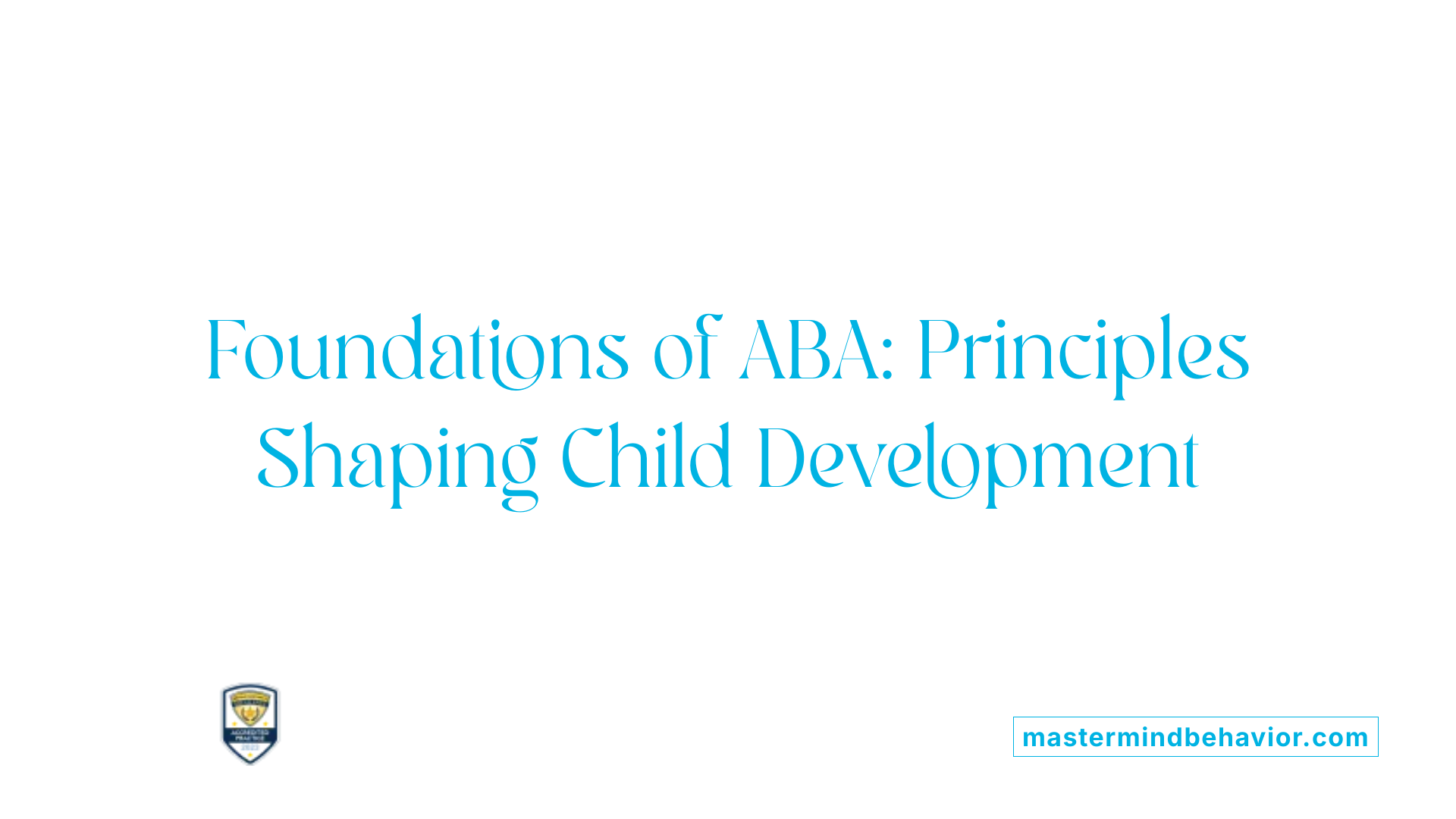
What are the basic principles of ABA like reinforcement, prompting, shaping, chaining, and generalization?
Applied Behavior Analysis (ABA) is rooted in key scientific principles that drive its effectiveness in educational settings. These include reinforcement, prompting, shaping, chaining, and generalization. Reinforcement involves providing a reward or positive consequence after a desired behavior occurs, encouraging repetition. Prompting offers hints or cues to help children perform a specific skill, gradually fading as independence builds. Shaping involves reinforcing successive approximations toward a target behavior, gradually guiding a child to complete complex tasks.
Chaining links smaller steps into a complete sequence, such as tying shoelaces or solving math problems, making complex skills manageable. Generalization ensures that learned skills transfer across different settings, people, and contexts, vital for real-world application. These principles work together to foster consistent skill acquisition and behavior change.
How do these principles support skill acquisition and behavior modification?
These ABA techniques promote learning by making skills more accessible and behaviors more desirable. For example, positive reinforcement strengthens behaviors like eye contact, classroom participation, and social interaction. Prompting helps children initiate tasks they might otherwise avoid, while shaping helps refine behaviors from simple to sophisticated.
Chaining enables mastery of multi-step activities, such as completing homework or following routines. Generalization ensures that children can apply their new skills outside the therapy or classroom environment, leading to greater independence.
Together, these principles create a structured, supportive learning environment that encourages growth, reduces challenging behaviors, and builds confidence.
Why is it important to have individualized ABA interventions tailored for educational success?
Every child with autism has unique strengths, challenges, and learning styles. Personalized ABA programs are essential to address specific behavioral, communication, and academic needs. Tailoring interventions ensures that strategies like reinforcement and prompting target the right skills at the right time.
Individualized plans also adapt to each child's pace, making learning more effective and enjoyable. They incorporate data-driven adjustments, so that interventions continuously evolve based on progress. This customization fosters motivation, improves skill transfer, and maximizes academic and social development.
In summary, the scientific principles of ABA—reinforcement, prompting, shaping, chaining, and generalization—form the backbone of effective educational strategies. When thoughtfully applied through personalized programs, they significantly enhance learning outcomes for children with autism.
Positive Reinforcement and Behavioral Strategies in the Classroom
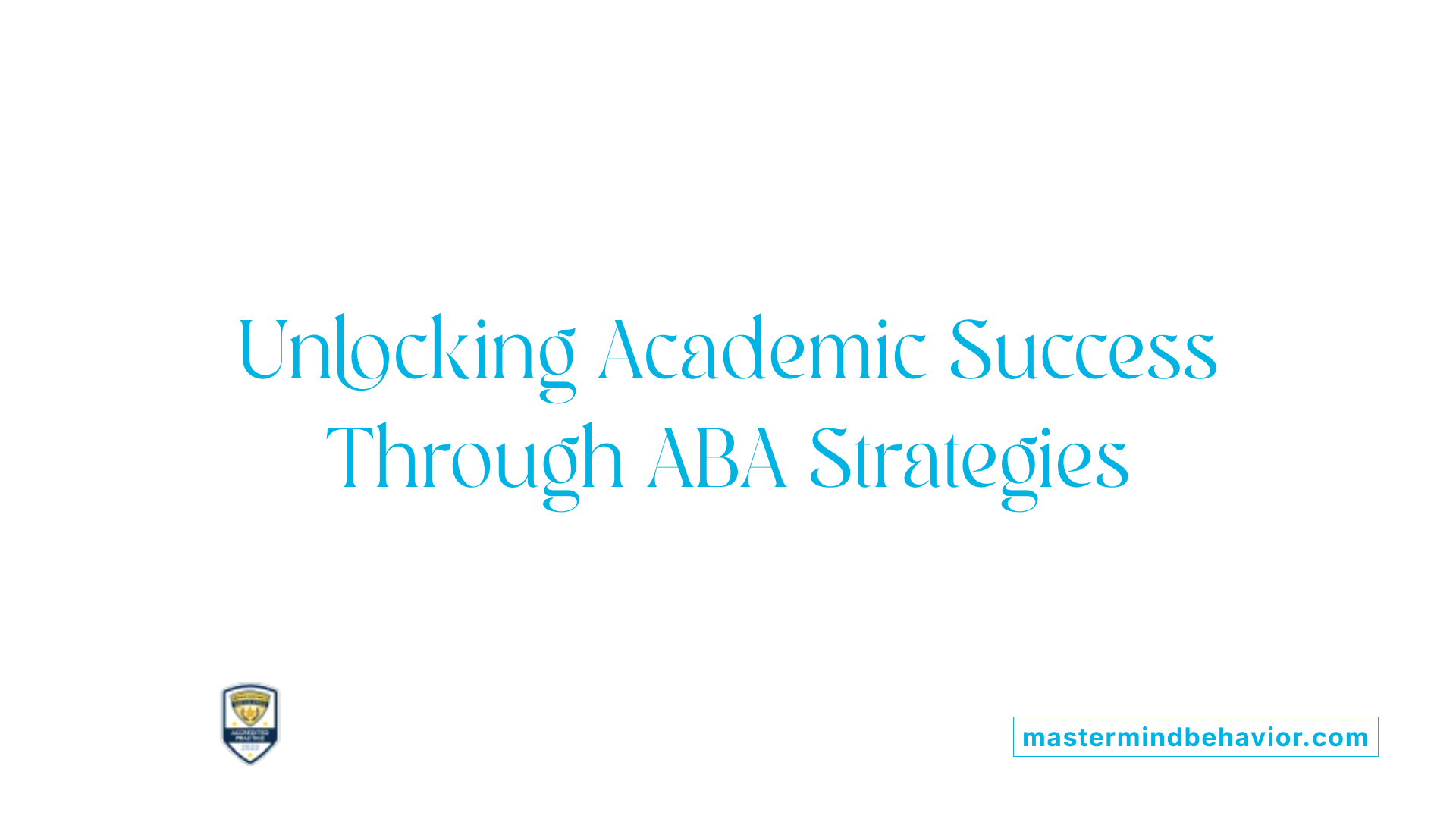
How does ABA therapy influence academic achievement and school performance?
ABA therapy plays a fundamental role in improving the academic success of children with autism spectrum disorder (ASD). By systematically teaching essential skills like communication, problem-solving, and self-regulation, ABA helps children meet specific learning challenges.
One of the most effective strategies in ABA is positive reinforcement. This approach involves rewarding desired behaviors with verbal praise, engaging activities, or treats. These rewards motivate children to repeat and strengthen positive behaviors, such as paying attention, completing tasks, and participating actively in lessons.
Reinforcement strategies also help foster focus and attention. For example, teachers and therapists may praise a child for sustained concentration or encourage participation through incentives. This creates a supportive environment where children feel motivated to stay engaged in their learning activities.
Furthermore, reinforcement reduces undesired behaviors that interfere with academic progress. It helps establish a positive classroom climate by reinforcing appropriate social and learning behaviors, which in turn leads to better social interactions and collaboration.
School-based ABA interventions are tailored to each child's needs and are often integrated into daily educational routines. This personalization ensures that skills learned outside the classroom, such as task initiation, time management, and self-regulation, translate into improved academic performance.
Overall, ABA therapy enhances not only individual skills but also overall school performance. Children develop greater independence, confidence, and perseverance, leading to more successful educational experiences and better preparation for future learning challenges.
Building Social Skills for Academic and Social Benefits
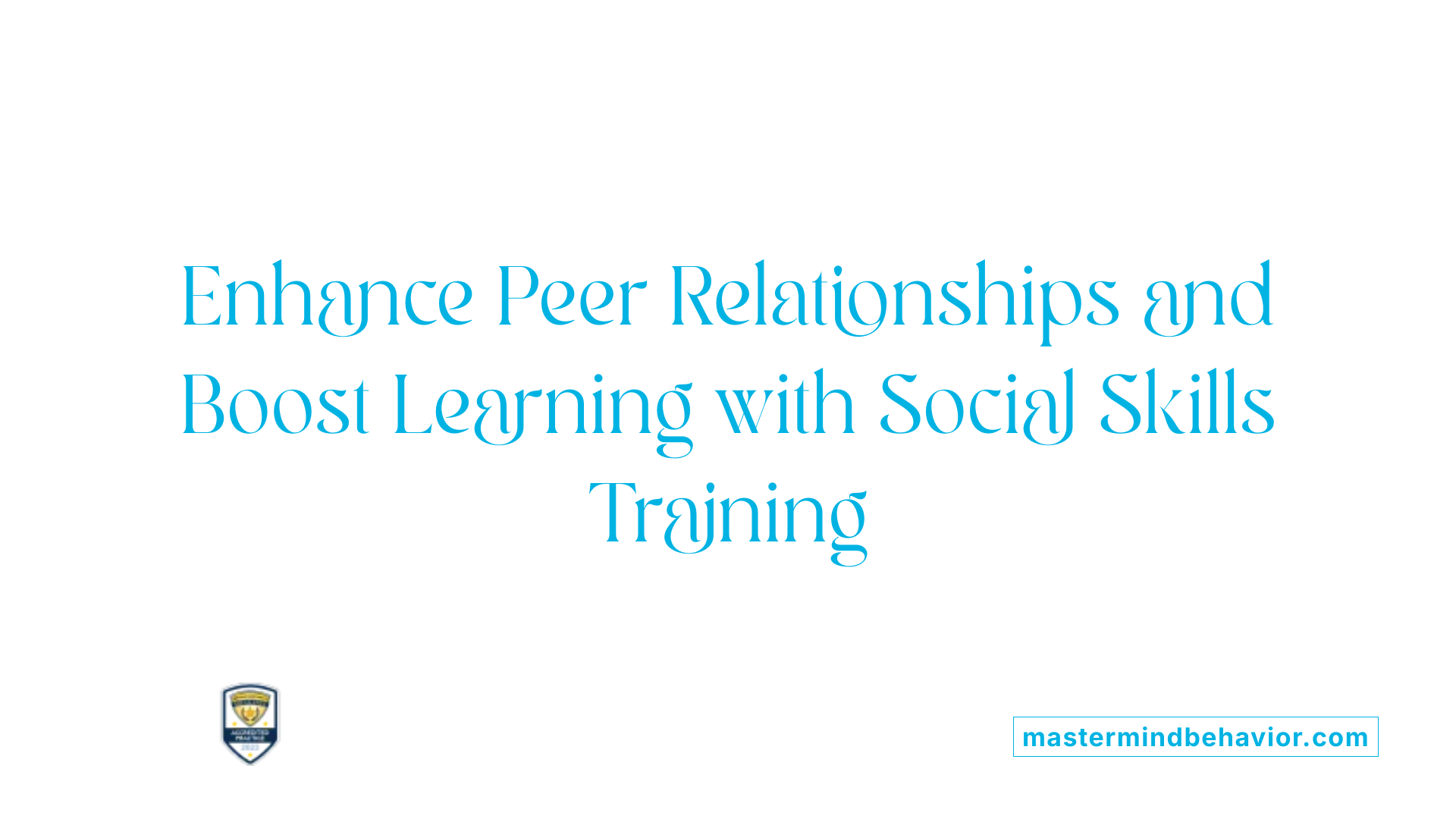
What social skills training does ABA include?
ABA therapy incorporates various social skills training methods aimed at improving a child's ability to interact effectively with peers and adults.
These include teaching conversation skills to initiate and maintain small talk, understanding and interpreting body language, practicing parallel play with peers, and engaging in game-playing activities.
By focusing on these areas, ABA helps children learn how to read social cues, respond appropriately, and participate in group activities.
How does developing social skills through ABA improve peer interactions?
The social skills learned through ABA enhance a child's ability to navigate peer relationships comfortably. Improved conversation skills allow children to make friends and sustain friendships.
Training in body language and social cues helps them understand others’ feelings and reactions, which fosters empathy and cooperation.
Group activities like parallel play and structured game-playing encourage children to practice social exchanges in real-world settings, boosting confidence.
These skills contribute to better classroom cooperation and a supportive learning environment.
Why is social competence important for academic success and self-esteem?
Social competence underpins many aspects of success in school. When children can interact positively, they tend to participate more actively and feel more engaged.
Good social skills reduce conflicts and behavioral issues, creating a calmer, more productive learning environment.
Furthermore, social success boosts self-esteem. Children feel valued and understood, which motivates them to learn and take on new academic challenges.
Overall, developing social skills through ABA opens doors to improved academic performance and stronger self-confidence.
Supporting School Readiness and Learning Independence
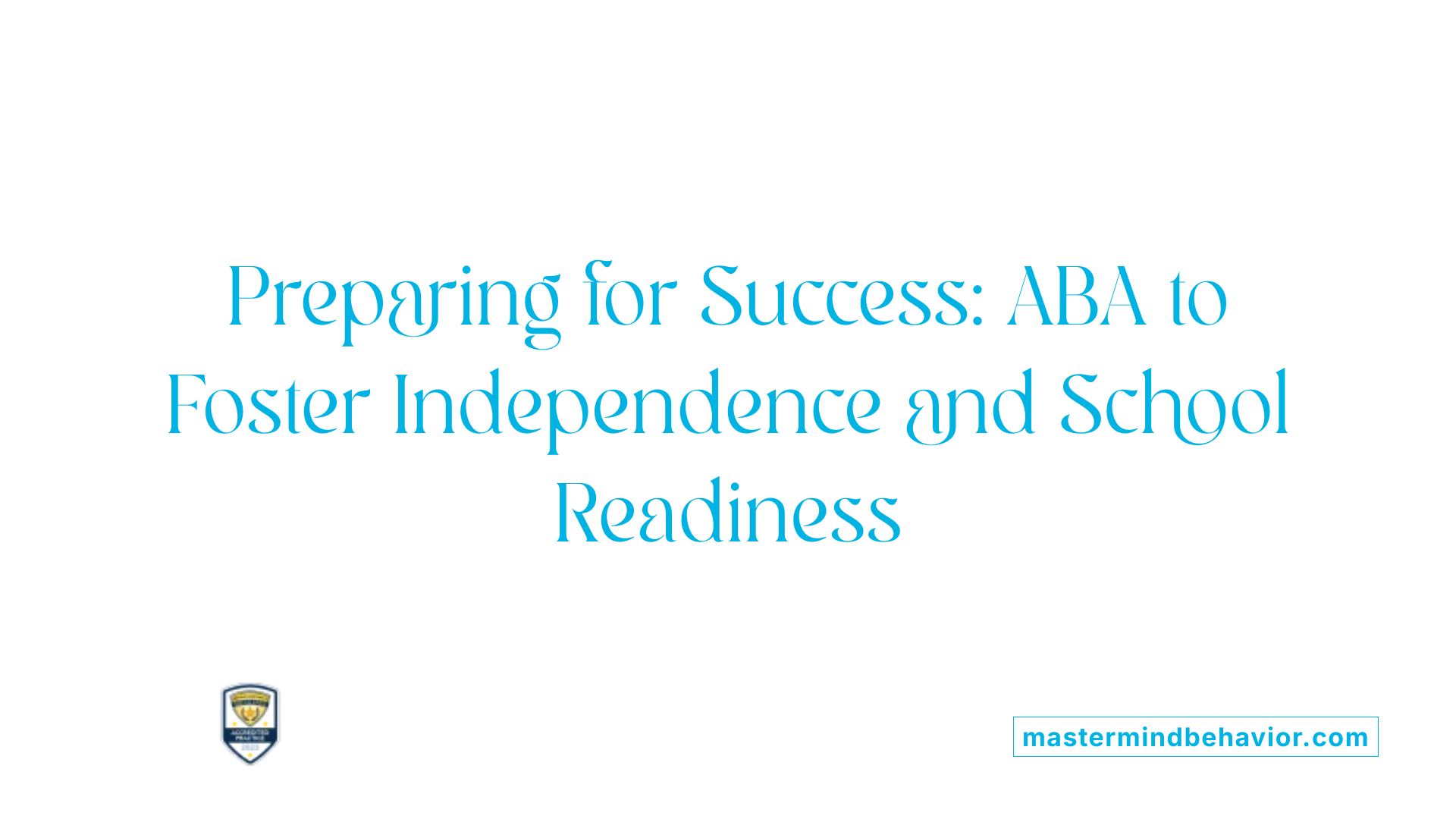
How does ABA therapy influence academic achievement and school performance?
ABA therapy has a substantial impact on improving academic outcomes for children with autism spectrum disorder (ASD). By teaching essential skills such as communication, problem-solving, and adaptive behaviors, ABA helps children engage more effectively in classroom settings. Through personalized reinforcement strategies, children are encouraged to participate actively in learning activities, which enhances focus and persistence.
ABA also emphasizes social skills development, improving peer interactions and collaboration. As children learn to follow instructions, initiate tasks, and manage their behavior, they become more independent learners. These improvements lead to better attention spans, increased perseverance, and a more positive attitude towards learning tasks, all contributing to higher academic achievement.
Overall, ABA provides the structure and support necessary for children with ASD to perform successfully in school, fostering their potential to excel academically and socially.
Development of self-regulation, task initiation, time management, and problem-solving skills
A core goal of ABA therapy is to build self-regulation skills, which help children control impulses and manage emotions like frustration or anxiety. Techniques such as visual schedules, reinforcement, and soothing supports enable children to develop coping strategies, essential for maintaining focus and calmness in school.
Task initiation and time management are fostered by breaking down complex assignments into manageable steps. This approach boosts confidence and nurtures a growth mindset, encouraging children to approach tasks with a positive attitude. Problem-solving skills are continuously reinforced through structured activities that require planning, reasoning, and adapting strategies as needed.
Developing these self-regulation and organizational skills supports children in independently navigating their school day, promoting long-term academic success.
How ABA techniques facilitate the transition from early learning to formal education
ABA strategies streamline the shift from early childhood learning to formal education by establishing routines and reinforcing foundational skills. Discrete Trial Training (DTT) and Natural Environment Teaching (NET) methods tailor learning experiences to each child's needs, gradually increasing complexity as competence improves.
Visual supports, social stories, and task analysis aid children in understanding classroom expectations and academic tasks. These tools enhance independence and readiness by making abstract concepts concrete and manageable.
As children develop consistent routines, they become familiar with classroom procedures, reducing anxiety and increasing engagement. The systematic nature of ABA allows children to transition smoothly, feeling more competent and confident in their new learning environments.
The importance of independence and self-regulation for academic success
Independence and self-regulation are vital skills for academic achievement. When children can manage their impulses, control emotions, and initiate tasks, they are better equipped to handle the demands of school.
Self-regulation supports sustained attention, patience, and resilience, which are necessary for completing assignments and learning new skills. Independence fosters confidence and motivation, encouraging children to take responsibility for their learning.
ABA therapy plays a significant role by explicitly teaching these skills through consistent reinforcement and structured practice. Ultimately, fostering independence and self-regulation not only improves immediate classroom performance but also lays a foundation for lifelong learning and success.
Implementing ABA in School Environments
How do ABA therapists, teachers, and school staff collaborate?
In school settings, collaboration is essential for successful ABA implementation. Therapists work closely with teachers and staff to develop tailored intervention plans that address each student's unique needs. Regular communication allows all parties to share progress, challenges, and strategies, ensuring consistency across environments. This joint effort creates a supportive learning atmosphere that fosters skill development.
How are interventions customized to meet individual student needs?
Each child with autism has distinct strengths and challenges. ABA interventions are personalized by assessing behavioral patterns and academic requirements. Therapists adapt techniques like reinforcement, task analysis, and prompting to suit the student’s learning style. Customization increases the effectiveness of interventions, leading to better engagement and achievement.
What role does data play in monitoring progress?
Data collection is a cornerstone of ABA therapy. Teachers and therapists record behaviors, academic skills, and response to interventions regularly. Analyzing this data helps determine what strategies work best and guides necessary adjustments. This ongoing monitoring ensures that interventions remain relevant and effective in supporting student growth.
What ABA strategies are commonly integrated into school programs?
School-based ABA utilizes several proven techniques:
| Technique | Description | Example Uses |
|---|---|---|
| Discrete Trial Training (DTT) | Structured teaching with clear prompts | Teaching specific academic skills, speech |
| Natural Environment Teaching (NET) | Learning in natural settings | Social interactions during recess |
| Peer Modeling | Using peers to demonstrate behaviors | Promoting social skills in group activities |
| Functional Communication Training (FCT) | Teaching alternative communication | Using picture cards for requests |
These strategies work synergistically to promote social, communication, and academic development.
What are the educational benefits of ABA therapy?
ABA therapy offers numerous educational benefits by promoting the development of essential skills such as communication, social interaction, attention, focus, and memory. It is based on principles of learning and behavior, utilizing techniques like positive reinforcement and data-driven assessments to tailor interventions to each individual. By understanding the functions of behavior and employing strategies such as visual supports and prompting, ABA helps individuals acquire new skills and reduce problematic behaviors. It is effective across all ages and severity levels of autism, supporting not only academic performance but also daily living and social skills. Overall, ABA enhances learning, adaptability, and quality of life for individuals with autism and other developmental challenges.
Expanding ABA Programs in Educational Settings
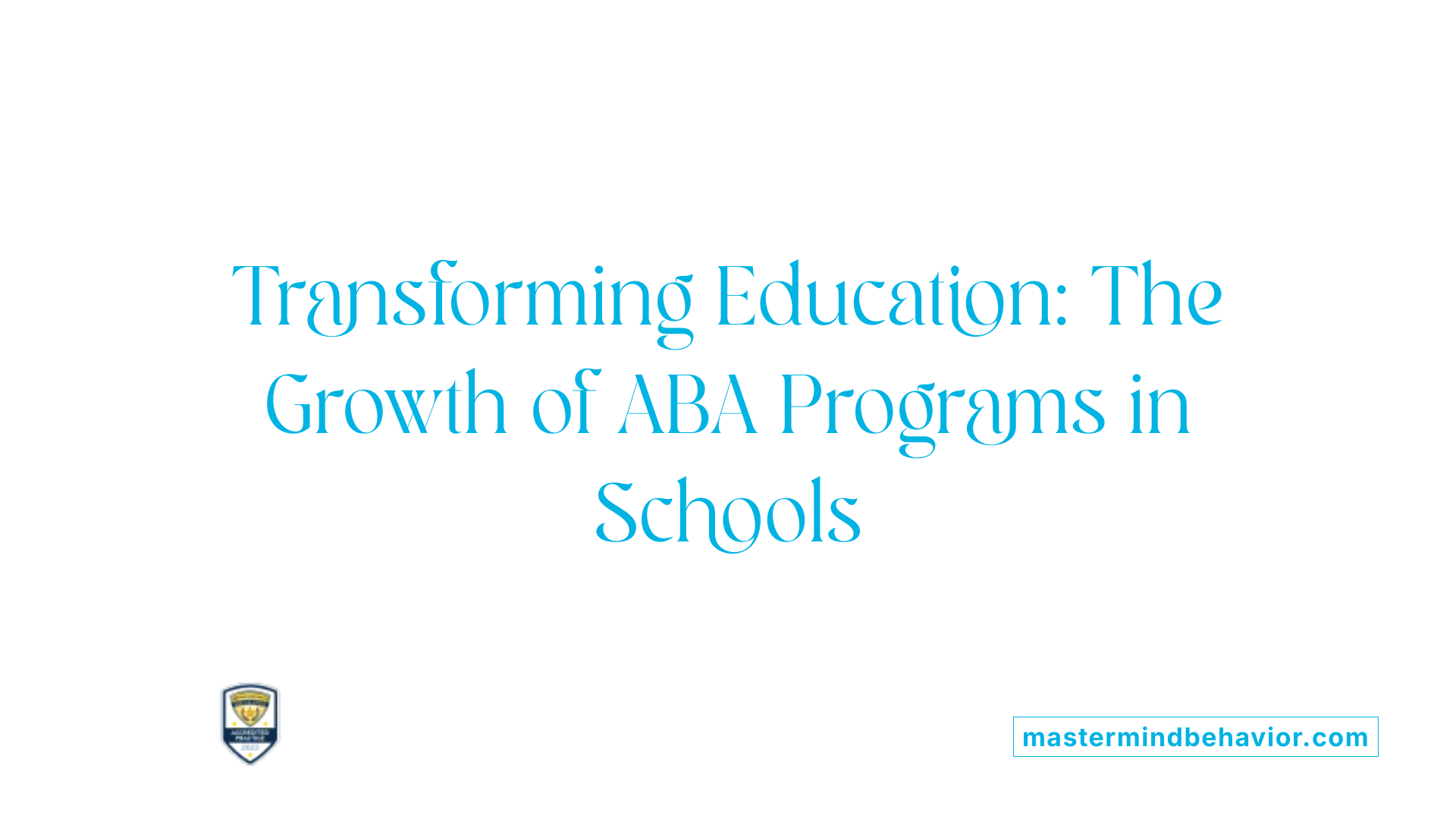 Recent trends highlight the increasing integration of Applied Behavior Analysis (ABA) therapy within public school systems, especially in cities like Atlanta and Greensboro. These regions are actively developing programs that embed ABA techniques into everyday educational practices to support students with autism spectrum disorder (ASD).
Recent trends highlight the increasing integration of Applied Behavior Analysis (ABA) therapy within public school systems, especially in cities like Atlanta and Greensboro. These regions are actively developing programs that embed ABA techniques into everyday educational practices to support students with autism spectrum disorder (ASD).
In Atlanta, efforts are expanding to incorporate evidence-based ABA strategies into various schools, aiming to improve both academic and social outcomes. Similarly, Greensboro offers localized ABA services that are tailored to individual student needs, promoting a more inclusive and supportive learning environment.
The widespread adoption of ABA programs offers numerous benefits. They significantly enhance students' ability to learn and perform academically by focusing on developing communication, self-regulation, and problem-solving skills. These programs help reduce problematic behaviors, creating a more focused and positive classroom atmosphere.
To ensure effective implementation, training for educators and school staff is essential. This training covers proper use of reinforcement strategies, task breaking, and social skills development. Teachers learn to apply ABA techniques seamlessly within the classroom setting, fostering better engagement and enabling students to achieve academic milestones.
| City | Program Status | Focus Areas | Implementation Strategies |
|---|---|---|---|
| Atlanta | Growing | Communication, behavior management | Teacher training, data-driven feedback |
| Greensboro | Established | Social skills, independence | Individualized plans, collaboration with therapists |
The expansion of ABA programs signals a reform towards more personalized and scientifically grounded approaches to education for children with ASD. By equipping educators with the right tools and knowledge, schools are better positioned to support the academic success and overall development of these students.
The Path Forward for Academic Success with ABA
Integrating ABA therapy into educational practices offers substantial benefits for children with autism, boosting their academic performance, social skills, and independence. As evidence continues to demonstrate its effectiveness, expanding ABA programs and training educators in its strategies can transform the school experience for countless students. Tailored and data-driven, ABA provides a pathway to increased engagement, confidence, and overall success, paving the way for brighter futures in education and beyond.
References
- Does ABA Therapy Improve Academic Achievement?
- Improving Academic Performance with ABA Therapy in Atlanta
- School-Based ABA Therapy: Success for Children with Autism
- How Effective ABA Therapy Techniques Support Academic Success
- How ABA Therapy Prepares Children for School Success
- ABA Therapy and Academic Skills: What Parents Should Know
- Applied Behavior Analysis (ABA) | Autism Speaks
- Applied Behavioral Analysis (ABA) - Autism Speaks
- ABA and other therapies | Autism Speaks










